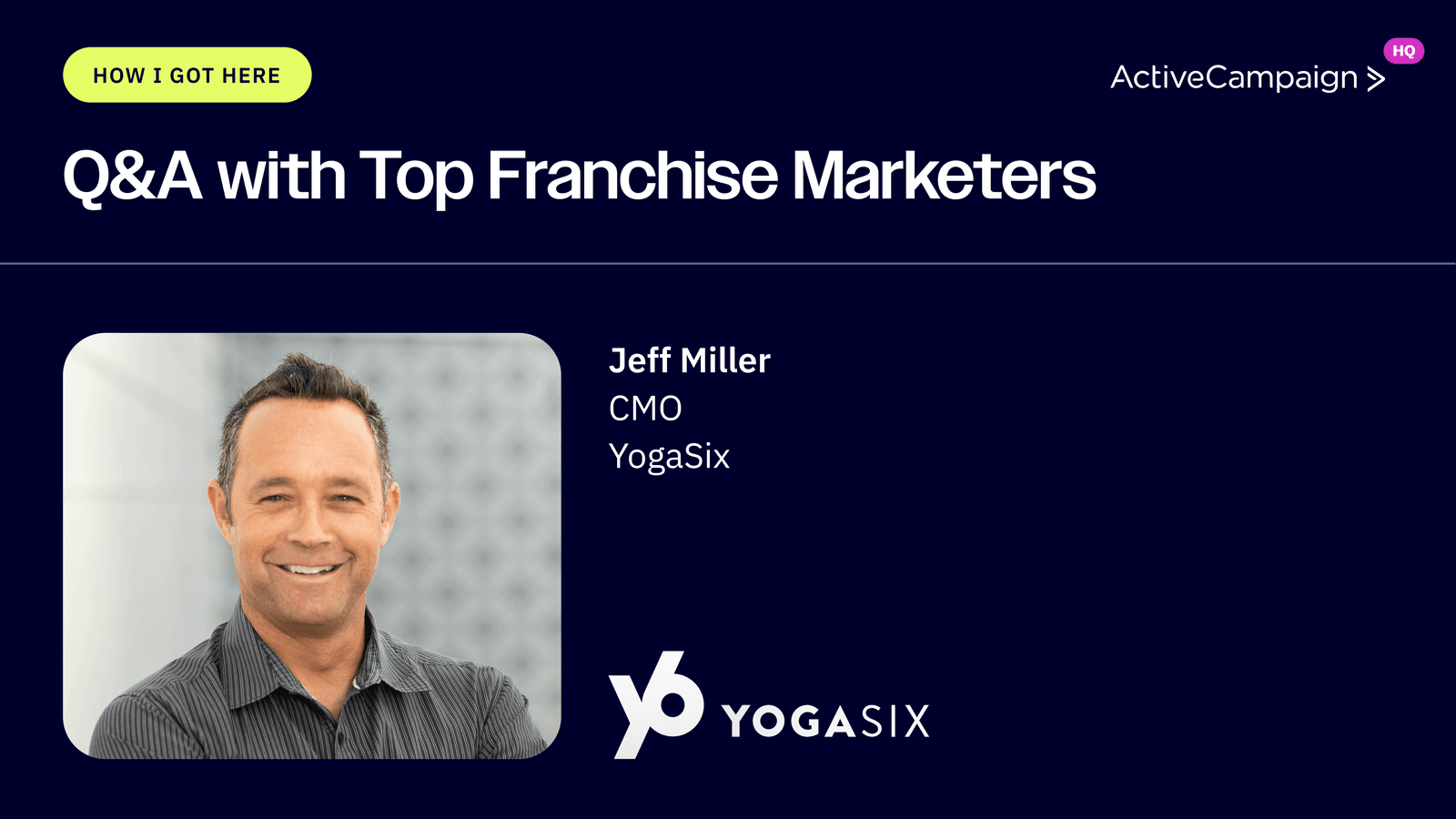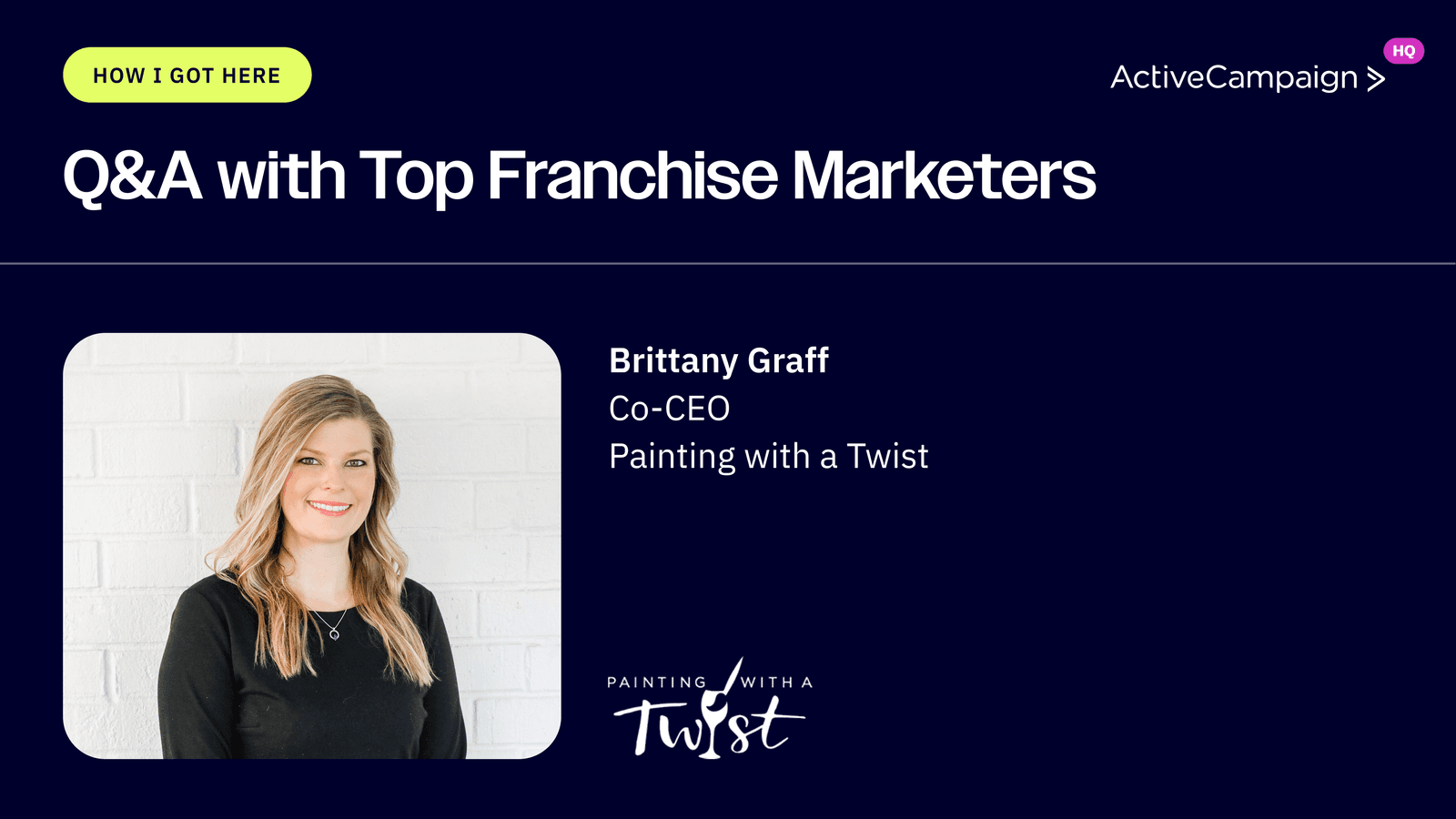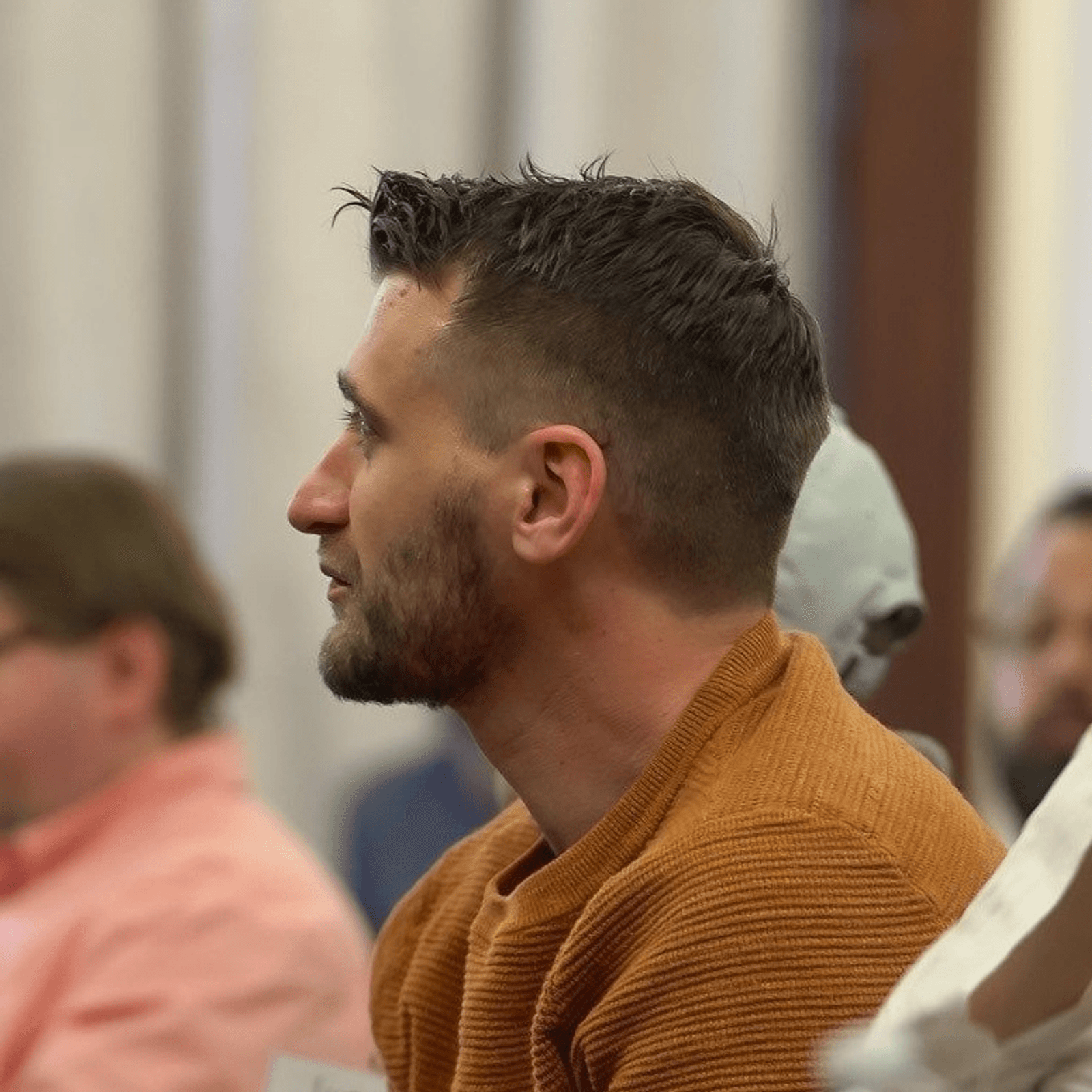Like many people, Jeff Miller’s path into franchise marketing was anything but linear.
He started his career in education and then more traditional marketing before a cold call from a recruiter landed him a job at YogaWorks. As the company grew from 15 corporately-owned studios to more than 60 during his tenure, he figured out the playbook for multi-location fitness marketing, including growing the company’s Instagram from zero to over 50K followers using their teachers as "influencers" before that was even a term.
This made his transition into the franchise side of the fitness world seamless, first as the director of marketing at Upgrade Labs during the early stages of their franchise journey, then at a large private equity-backed group that owned 50+ Orangetheory Fitness studios, and and now at Xponential Fitness, where he’s served as the CMO of Row House and currently CMO for YogaSix.
Along the way, he’s helped the brands he works with pioneer new products, achieve presale numbers like they’ve never seen before (at Orangetheory he was part of a team that had their largest presale studio launch to date), and build fitness communities that change lives—for customers and franchise owners alike.
In this interview, we tap into Jeff's decades of experience to learn how he launches effective franchise-wide partnerships, the critical mindset for great franchise marketers, and what he really thinks about brand consistency in franchise marketing.
What have been some of your biggest marketing wins at YogaSix? How did you achieve them?
One of the biggest wins since I started with YogaSix in January of 2024 was launching the first-ever YogaSix Day on June 6 — another nod to the number six. I’m a big believer in creating “tentpole” moments—events that bring the network together, give members something to celebrate, and create buzz across social, PR, and the studio itself.
We offered an exclusive class only available that day that our students loved, special one-day-only promotions, partnerships, and incentives to bring in new guests. It was our third-highest revenue and new membership day of the year, and had some of the highest class utilization all year—right at a time when wellness routines tend to slip heading into summer. We’re already deep into planning for June 6, 2025, which is going to take what we started last year to the next level.

YogaSix commemorated 6/6 as a tentpole moment for their marketing efforts
Another win was our partnership with lululemon as part of their Member Madness campaign in March of this year. YogaSix offered a free class to lululemon loyalty members. The campaign drove thousands of first-time visits and gave us a way to align with a like-minded and well-respected brand. It’s a partnership I was especially excited about, having worked with lululemon since their early days back when I was at YogaWorks and they were breaking into the yoga industry.
How do you approach partnerships differently as a franchise business? How do you ensure franchise owner buy-in?
I love partnerships—but they always take more time and effort than expected in order to see solid results for both partners. In the franchise world, success hinges on participation and studio buy-in. A partnership only works at scale if our 200+ studios are excited and engaged.
We explain the “why,” provide creative assets, and offer ways to make the partnership meaningful—whether that’s getting new people in the door or aligning with a great cause. Having been a franchisee, I know how important it is to align on goals. Our job is to provide franchisees with proven campaigns and frameworks that help them achieve what they came here to do.
How do you prove strategies and frameworks before rolling them out to all of your franchisees?
We are always testing and trying new things as the battle to win over customers is always changing. We do test some new platforms or campaigns on a smaller set of studios before launching to the network. We will also take successful strategies from other Xponential Fitness brands and apply them to YogaSix.
But a lot of marketing in the world of health and fitness comes back to the basics, which is a core part of our team's expertise. Focusing on four walls, four blocks, and four miles. Knowing the names of your current members. Providing a world-class customer experience. Getting out in your community. All of these are just as important now.
What do you do to support authentic and effective local marketing for franchise owners, while still keeping brand consistency?
We’re fortunate—yoga studios naturally become part of the community because we change people’s lives every day. That kind of trust and connection can’t be faked, and it matters more than big-budget ad campaigns.
To support local marketing, we train studios on how to plug into their communities. We provide playbooks and SOPs with outreach ideas and real-world examples, which we update and maintain in our franchise learning management system.
One recent example: We noticed a spike in interest around local run clubs, so we researched clubs within 10 miles of each studio, gave owners contact info, ideas for collaboration, and ways to position YogaSix as a great complement for runners. Simple, targeted, effective.
We also host virtual monthly marketing workshops, and grassroots marketing and getting out in your community is a topic at least once a year. Going further, we host in-person regional trainings where we invite anyone who works at a studio to attend two days of hyper-focused training. On the second day, we go into a studio and spend 1-2 hours creating grassroots strategies for the studios that attend. We want them to walk away with a detailed action plan specific to their studio. Finally, we have our big Xponential-wide conference in Las Vegas. At the event, Xponential will often have cross-brand workshops that touch on this topic, and we will have a YogaSix brand session 100% dedicated to this.
This is an area where I might get myself in trouble, but I am less interested in “brand consistency” within grassroots local marketing. Grassroots local marketing should be more about the community than the brand.
I feel the opposite around things like what the studio looks like, digital ads, the in-studio experience, email, and social media. This is where we need to be super consistent to tell a cohesive brand story and differentiate us from other fitness studios. Doing this effectively means always going back to our key brand attributes—modern, energizing, empowering, and fun yoga classes that connect the mind to the body.
"This is an area where I might get myself in trouble, but I am less interested in “brand consistency” within grassroots local marketing."
How did you shift your approach when marketing internationally with the launch of YogaSix in Asia and Europe?
Xponential Fitness [the parent company of YogaSix] has a strong international team and master franchise model, which makes a huge difference as we don’t have to start from scratch since other Xponential brands may already be in that region or country. Still, we had to adjust—language, tone, messaging, and the tools we recommend are all needed to evolve for local markets.
For example, our U.S. franchisees are used to the concept of a presale campaign where you sell memberships before a studio opens. In markets like Germany and Japan, this idea was brand new and required training and trust-building.
The core principles still apply: understand your potential student, connect authentically, and deliver what you promise: a world-class experience.
What separates great franchise marketers from average ones?
My core answer is the same regardless if you are a franchise marketer or any other marketer. The best marketers actually love marketing. You need to love the mix: creative, data, brand, positioning, platforms, copy, partnerships, PR, content, advertising, social media–all of it.
In fitness specifically, you need to understand that getting someone to walk into their first yoga class isn’t easy. Assuming people move through a clean, linear marketing funnel—think about yoga, click on an ad, book a class, show up, convert—is not always true. That path is messier, including every touchpoint: the ad, the cleanliness of the studio, the front desk interaction, the follow-up email, online reviews, timing, offer, the music in class, parking. It all matters and is all part of a nuanced decision process.
In franchising, you also need to be okay with not having total control. When I ran marketing for other brands, my team and I really controlled the entire marketing experience. Franchise marketing is a partnership. It’s a back-and-forth, not a top-down directive. Studio owners are the experts in their community. Our job is to give them the best tools and support, but the magic happens in the studio. If a new guest isn’t greeted with a smile, doesn’t have a great class, or doesn’t feel seen, it doesn’t matter how good our marketing is.
What’s one thing franchise marketers should be talking more about—but aren’t?
Everyone’s talking about AI–and rightfully so–but I think we’re overlooking something just as powerful: real, human connection.
In boutique fitness, we still have the opportunity to operate at a near 1:1 level with our members and potential students. That personal connection is our superpower. And in a world where AI is everywhere, the brands that can stay connected to their communities in real ways will win.






